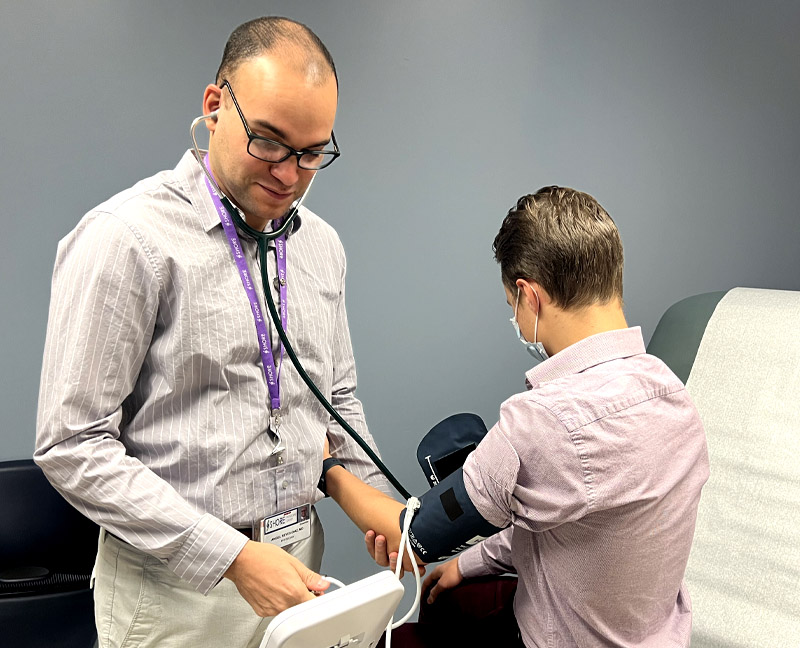Tips for Effective Blood Pressure Monitoring at Home

By Angel Reyes-Diaz, MD, Shore Physicians Group
If you’ve been diagnosed with high blood pressure, or hypertension, know that you’re not alone; it’s a common issue affecting nearly half of all American adults. Unmanaged high blood pressure can lead to various health problems, including heart disease, stroke, and kidney damage.
As a primary care physician, I’m here to work closely with my patients on developing a personalized treatment plan for hypertension, which may include medication, lifestyle changes, and ongoing monitoring. For many patients, home blood pressure monitoring becomes a vital part of their journey.
To manage your blood pressure effectively, we rely on consistent, long-term data rather than occasional office readings, which can be influenced by the stress of the doctor’s office. Home monitoring is essential, however it’s crucial that you do it correctly. I’m passionate about helping patients monitor their blood pressure at home, and I’d like to share some key tips for accurate results.
- Choosing the Right Monitor: With various blood pressure machines available, selecting the one that suits you best is crucial. Typically, upper arm cuffs are more accurate than wrist cuffs, as recommended by the American Heart Association. Ensure the cuff fits your upper arm’s circumference properly. If it’s too big or too small, it could lead to inaccurate readings. Bringing your machine to your next doctor’s appointment for calibration is also a good practice.
- When to Measure: It’s advisable to check your blood pressure at least twice a day, ideally at the same time each day for consistency. Take two readings, one minute apart, and do so in the morning before taking medications and in the evening before dinner. It’s important to measure your blood pressure when you feel most relaxed and to avoid taking it after consuming caffeine or alcohol, smoking, during emotional or stressful moments, or after physical exertion to prevent falsely elevated readings.
- Ensure Correct Positioning: Proper positioning is pivotal for accurate readings. Follow these steps when checking at home:
- Sit in a chair with your feet flat on the floor and your back supported.
- Rest for a few minutes with your arm positioned at heart level on a flat surface.
- Ensure the cuff fits your upper arm correctly.
- Place the cuff just above the bend of your elbow on bare skin.
- Be still and silent throughout the reading.
- Keep a Log: Your doctor will want to review your blood pressure results over time. Maintain a detailed log of the date, time, and your blood pressure readings. If your machine has a storage feature, you can access your data there. You can also use a smartphone’s “Notes” feature or download a blood pressure tracking app. Some monitors even have corresponding apps for seamless data management.
- Report Abnormal Findings: Understanding your blood pressure readings is essential. The two numbers, systolic and diastolic, determine your blood pressure level. Typically, normal blood pressure falls below 120/80. Readings exceeding 130/80 are considered high, while those in between are elevated. Should your blood pressure exceed 180 in the first number and 120 in the second, it’s vital to notify your doctor promptly, as you may need emergency care.
In adopting these practices for home blood pressure monitoring, you play an active role in controlling your hypertension and reducing the risk of complications. Your partnership with your healthcare provider is key to achieving and maintaining a healthier future.
If you’re looking for a caring and experienced primary care physician, Angel Reyes-Diaz, MD is here to help. Angel Reyes-Diaz, MD sees patients at Shore Physicians Group’s Northfield office, located at 2605 Shore Road. To schedule an appointment, call 609-365-5300.